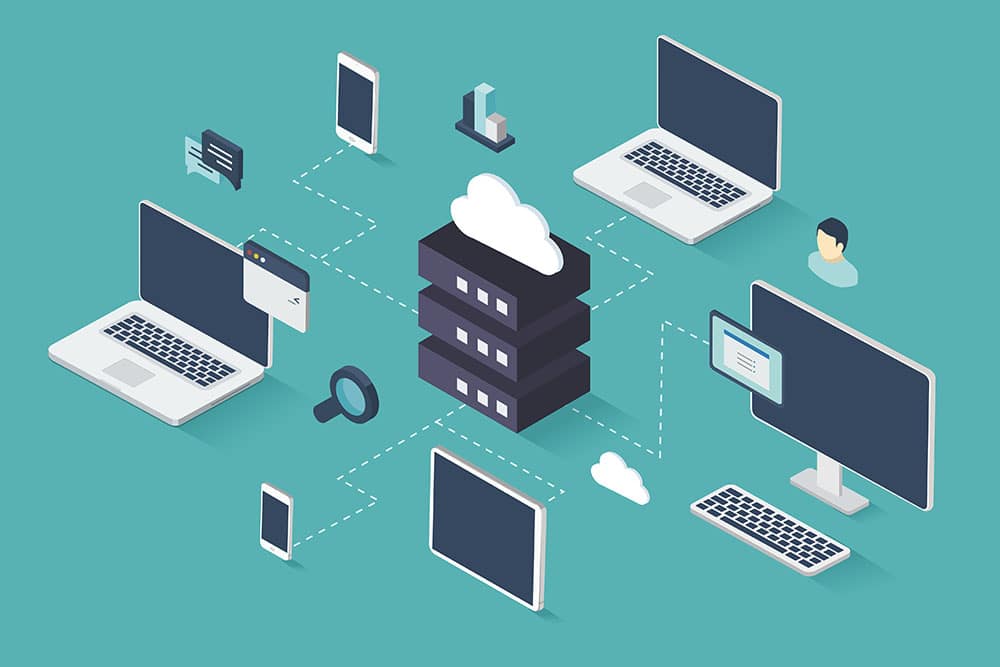Digital transformation has been the name of the game in recent years, with a move to cloud-based solutions becoming a necessity. When it comes to business, the cloud has become the new normal. More and more people are migrating to the cloud, serving as a viable alternative to on-premises computing due to its many benefits.
Cloud migration moves data, applications, workloads, and other business assets from an on-premise environment to the cloud. During this process, there are a lot of risks and other things to consider. After all, you’re putting vital information in someone else’s hands. But, don’t let that stop you from making the move. Cloud migration may seem complex and daunting, but it’s a smooth process with careful planning and execution.
It’s important to take a comprehensive and systematic approach to mitigate the risks presented by cloud migration and securely navigate securely the cloud migration process. You also need to know all the necessary cloud security tools that you may need. An overview of security features can help you determine the right options for your needs.
How To Securely Migrate To The Cloud
As more and more businesses move to the cloud, critically understanding how to perform a secure cloud migration is essential. Here are the steps you ought to take:
Step One: Conduct A Risk Assessment
The first step in secure cloud migration is to assess the security of the target cloud environment. This includes checking the security of the cloud provider, platform, and infrastructure.
A provider with a good reputation in terms of security and privacy would be the best option. Also, it’d be great if you chose a platform that can audit and monitor activities.
Step 2: Choose The Right Cloud Provider
When selecting a cloud provider, be sure to evaluate its security offerings. What kind of security measures do they have in place? Do they offer encryption and data loss prevention? Do they have a robust disaster recovery plan? Make sure you select a cloud provider that can meet your security needs. Once you’ve chosen a provider, be sure to sign a contract that outlines their responsibilities in terms of security and compliance.
Step Three: Plan And Design A Secure Migration Strategy
The next step is to plan and design a secure and detailed migration strategy. This strategy will consider both the security risks of the target environment and the security controls that’ll be put in place. It’s also important to note that maintaining data security and properly configuring programs will be two of the most crucial considerations during a migration. You can also include timelines and action items for migrating your data and apps.
Step Four: Migrate Data Securely
There are a few different ways to migrate data to the cloud, and choosing the right method for your data is important. If you’re migrating sensitive data, you’ll want to encrypt them before migrating. This way, even if your data is compromised, it’ll be unreadable without the encryption key. You’ll also want to consider data deduplication and data compression to reduce the amount of data that needs to be migrated.
Step Five: Configure Security
Once your data is in the cloud, it’s essential to configure security properly. This includes things like setting up firewalls and configuring access control lists. Be sure to consult with your cloud provider to understand what safety features they offer and how to configure them.
Step Six: Monitor And Audit
Once your data are in the cloud, monitoring them for any unusual activity is must. This includes monitoring for unauthorized access, unusual data transfers, and unexpected changes to data. Also, be sure to put together a plan for how you’ll monitor and audit your data. This should include defining who’s responsible for monitoring, what tools will be used, and how often you’ll review the data.
Benefits Of Cloud Migration
The cloud has become an integral part of business operations for many companies. Secure cloud migration can provide numerous benefits, including increased security and scalability.
Security is a top concern for companies when storing and sharing data. The cloud provides a more secure environment than on-premise data centers. Cloud providers have implemented stringent measures to protect data. In addition, the cloud offers the ability to encrypt data at rest and in transit, further enhancing security.
Scalability is another key benefit of the cloud. Companies can easily scale up or down their usage, as needed. This flexibility isn’t possible with on-premises data centers. With the cloud, businesses only pay for the resources they use.
Efficiency is also another major advantage of the cloud. Cloud-based applications can be accessed from anywhere, at any time. This allows employees to be more productive and collaborate more quickly since it enables remote working, which is essential, especially in times of uncertainty. Cloud-based applications are also easier to deploy and manage than on-premise applications.
Cloud migration offers savings on costs. Moving to the cloud can save you money in several ways:
- You’ll no longer need to invest in on-premise infrastructure.
- You’ll be able to take advantage of the cloud provider’s economies of scale.
- You’ll only pay for the resources you use instead of excess capacity.
Furthermore, migrating to cloud is extremely beneficial in case of disaster recovery. With on-premise infrastructure, you’re at the mercy of the elements in the event of a disaster. If a hurricane or earthquake hits, you could lose your data forever. But, with the cloud, you can quickly and easily recover your data from a remote location.
Tips For A Secure Cloud Migration
Migrating data and applications to cloud-based solutions presents many benefits for businesses. However, there are a few concerns that need to be considered. Here are some pro tips that will come in handy when performing a secure cloud migration:
- Implement A Data Loss Prevention Strategy
It’s vital to have a data loss prevention strategy in place if data were lost or stolen. This may include backing up data regularly, encrypting sensitive data, and implementing access controls.
- Train Employees On Security Best Practices
Since employees will have access to data stored in the cloud, it’s essential to provide them with training on the most effective security practices. These may include how to create strong passwords, how to spot phishing emails, and how to report suspicious activities.
- Keep Your Cloud Environment Up-To-Date
Maintaining an up-to-date cloud environment is essential, just as it is with any other type of software. This way, you can ensure you have the latest security features and patches.
Summary
Moving to the cloud is the norm these highly digitalized times, especially amongst businesses. However, it’s critical to ensure that your data are secure during the migration to truly realize and experience the many benefits of the cloud. By following this guide, you can easily achieve that.



